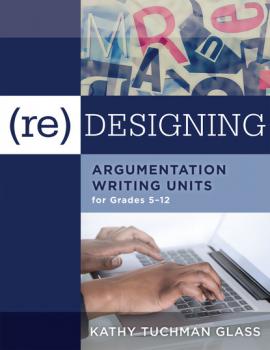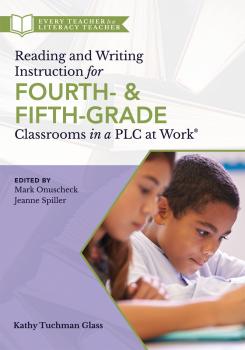Kathy Tuchman Glass
Список книг автора Kathy Tuchman Glass(Re)designing Argumentation Writing Units for Grades 5-12
Writing plays a crucial part in all education disciplines, helping students to communicate their ideas to different audiences and extend their content knowledge. Developed fhttp://player.listenlive.co/35601/enor teachers, curriculum designers, and literacy coaches, this user-friendly guide offers practical recommendations, strategies, and tips for establishing argumentation units of instruction that empower students to artfully and logically present and convince others of their position. Benefits Examine the characteristic elements of an argument and the benefits of teaching students to work through how to structure an argument. Examine an argumentation unit map, its learning goals and guiding questions, and then develop cohesive units based in argumentation writing. Complete exercises throughout the book that will help to create consistent, engaging units that will prepare students to take on any writing challenge that asks them to exercise their persuasive-writing skills. Design a full lesson on argumentation, from establishing author’s purpose, to supporting a thesis with evidence, to presenting counter-arguments. Download templates, checklists, rubrics, and student activities useful for designing an argumentation unit and guiding lessons. Contents Introduction Chapter 1: Preparing for Argumentation Chapter 2: Building an Argumentation Unit Map Chapter 3: Formulating a Pre- and Culminating Assessment and Establishing Criteria for Success Chapter 4: Writing Engaging Introductions Using Gradual Release of Responsibility Chapter 5: Designing Lessons Epilogue Appendix A: List of Figures and Tables Appendix B: Professional and Student Resources References and Resources Index
Fundamentals of (Re)designing Writing Units, The
Prepare students to take on any writing challenge, including district- and state-mandated literacy tests. Perfect for teachers, curriculum designers, and literary coaches, this title provides guidance for designing new writing units and revising existing ones across content areas for grades 5–12. You’ll discover practical strategies and best practices for teaching skills in drafting, editing, revising, peer feedback, assessment, and student collaboration. Consistent and engaging lesson design based on these principles will prepare students to take on any writing challenge, including district- and state-mandated literacy tests. Benefits Examine the stages of the writing process and the benefits of teaching students to work through them. Assess the particular importance of the feedback stage of students’ writing process. Study the components and rationale of the backward-planning approach to unit design. Gain access to downloadable templates, checklists, rubrics, and student activities useful for guiding and assessing students in their writing. Explore comprehensive lists of online resources and tools that educators and students may use in lessons aimed at writing. Contents Introduction 1 The Importance of Writing to Learn 2 The Stages of the Writing Process 3 The Backward-Planning Approach to Unit Design 4 Culminating Assessments and Criteria for Success 5 Effective Lesson Design: The Gradual Release of Responsibility Model 6 Launch the Unit Epilogue
(Re)designing Narrative Writing Units for Grades 5-12
Teaching writing is a powerful and effective means for learning across all grade levels and disciplines. This user-friendly resource provides practical recommendations, strategies, and assessments for designing units of study that center on both narrative nonfiction and creative writing. Throughout the book, readers can complete exercises that equip them to create a comprehensive narrative unit of instruction that is ready to pilot. It also provides narrative activities, assessments, sample tasks, rubrics, checklists, writing sample resources, and more for fifth grade to high school. Learn how to design and maintain a unit that improves students' narrative writing skills: Learn a sequential approach to building a narrative writing unit. Review how to structure a narrative. Reflect on past teaching approaches and revise for future narrative writing lesson plans. Download free templates, checklists, rubrics, and narrative writing activities useful for designing a narrative writing plan and guiding lessons. Access professional and student resources in print and online for understanding and teaching narrative writing. Contents: Introduction Chapter 1: Building a Narrative Unit Map Chapter 2: Formulating a Pre- and Culminating Assessment and Establishing Criteria for Success Chapter 3: Enhancing Setting with Imagery Using Gradual Release of Responsibility Chapter 4: Designing Lessons Chapter 5: Studying an Author's Craft by Analyzing Text Epilogue Resource A: Narrative and Descriptive Characteristics and Associated Genres Resource B: Elements of Literature Resource C: Literacy Devices and Figurative Language



